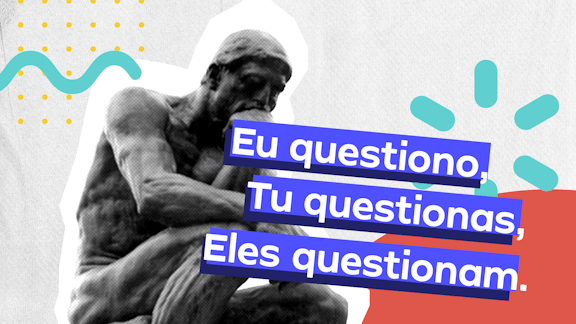As to the methodology used in the research, a
group of participants had to learn associations
between words and pictures of objects or scenes and
then
T E X T
Can you learn in your sleep?
Sleep is known to be crucial for learning and
memory formation. What's more, scientists have even
managed to pick out specific memories and
consolidate them during sleep. However, the exact
mechanisms behind this were unknown — until now.
Those among us who grew up with the
popular cartoon "Dexter's Laboratory" might
remember the famous episode wherein Dexter's
trying to learn French overnight. He creates a device
that helps him to learn in his sleep by playing French
phrases to him. Of course, since the show is a
comedy, Dexter's record gets stuck on the phrase
"Omelette du fromage" and the next day he's
incapable of saying anything else. This is, of course, a
problem that puts him through a series of hilarious
situations.
The idea that we can learn in our sleep has
captivated the minds of artists and scientists alike;
the possibility that one day we could all drastically
improve our productivity by learning in our sleep is
very appealing. But could such a scenario ever
become a reality?
New research seems to suggest so, and
scientists in general are moving closer to
understanding precisely what goes on in the brain
when we sleep and how the restful state affects
learning and memory formation.
For instance, previous studies have shown
that non-rapid eye movement (non-REM) sleep — or
dreamless sleep — is crucial for consolidating
memories. It has also been shown that sleep spindles,
or sudden spikes in oscillatory brain activity that can be seen on an electroencephalogram (EEG) during the
second stage of non-REM sleep, are key for this
memory consolidation. Scientists were also able to
specifically target certain memories and reactivate, or
strengthen, them by using auditory cues.
However, the mechanism behind such
achievements remained mysterious until now.
Researchers were also unaware if such mechanisms
would help with memorizing new information.
Therefore, a team of researchers set out to
investigate. Scott Cairney, from the University of York
in the United Kingdom, co-led the research with
Bernhard Staresina, who works at the University of
Birmingham, also in the U.K. Their findings were
published in the journal Current Biology.
Cairney explains the motivation for the
research, saying, "We are quite certain that memories
are reactivated in the brain during sleep, but we don't
know the neural processes that underpin this
phenomenon." "Sleep spindles," he continues, "have
been linked to the benefits of sleep for memory in
previous research, so we wanted to investigate
whether these brain waves mediate reactivation. If
they support memory reactivation, we further
reasoned that it could be possible to decipher memory
signals at the time that these spindles took place."
To test their hypotheses, Cairney and his
colleagues asked 46 participants "to learn
associations between words and pictures of objects or
scenes before a nap." Afterward, some of the
participants took a 90-minute nap, whereas others
stayed awake. To those who napped, "Half of the
words were [...] replayed during the nap to trigger
the reactivation of the newly learned picture
memories," explains Cairney.
"When the participants woke after a good
period of sleep," he says, "we presented them again
with the words and asked them to recall the object
and scene pictures. We found that their memory was
better for the pictures that were connected to the
words that were presented in sleep, compared to
those words that weren't," Cairney reports.
Using an EEG machine, the researchers were
also able to see that playing the associated words to
reactivate memories triggered sleep spindles in the
participants' brains. More specifically, the EEG sleep
spindle patterns "told" the researchers whether the
participants were processing memories related to
objects or memories related to scenes.
"Our data suggest that spindles facilitate
processing of relevant memory features during sleep
and that this process boosts memory consolidation,"
says Staresina. "While it has been shown previously,"
he continues, "that targeted memory reactivation can
boost memory consolidation during sleep, we now
show that sleep spindles might represent the key
underlying mechanism."
Cairney adds, "When you are awake you
learn new things, but when you are asleep you refine
them, making it easier to retrieve them and apply
them correctly when you need them the most. This is
important for how we learn but also for how we might
help retain healthy brain functions."
Staresina suggests that this newly gained
knowledge could lead to effective strategies for
boosting memory while sleeping.
So, though learning things from scratch à la
"Dexter's Lab" may take a while to become a reality,
we can safely say that our brains continue to learn
while we sleep, and that researchers just got a lot
closer to understanding why this happens.
From:
https://www.medicalnewstoday.com/articles/Mar/2018
T E X T
Can you learn in your sleep?
Sleep is known to be crucial for learning and memory formation. What's more, scientists have even managed to pick out specific memories and consolidate them during sleep. However, the exact mechanisms behind this were unknown — until now.
Those among us who grew up with the popular cartoon "Dexter's Laboratory" might remember the famous episode wherein Dexter's trying to learn French overnight. He creates a device that helps him to learn in his sleep by playing French phrases to him. Of course, since the show is a comedy, Dexter's record gets stuck on the phrase "Omelette du fromage" and the next day he's incapable of saying anything else. This is, of course, a problem that puts him through a series of hilarious situations.
The idea that we can learn in our sleep has captivated the minds of artists and scientists alike; the possibility that one day we could all drastically improve our productivity by learning in our sleep is very appealing. But could such a scenario ever become a reality?
New research seems to suggest so, and scientists in general are moving closer to understanding precisely what goes on in the brain when we sleep and how the restful state affects learning and memory formation.
For instance, previous studies have shown that non-rapid eye movement (non-REM) sleep — or dreamless sleep — is crucial for consolidating memories. It has also been shown that sleep spindles, or sudden spikes in oscillatory brain activity that can be seen on an electroencephalogram (EEG) during the second stage of non-REM sleep, are key for this memory consolidation. Scientists were also able to specifically target certain memories and reactivate, or strengthen, them by using auditory cues.
However, the mechanism behind such achievements remained mysterious until now. Researchers were also unaware if such mechanisms would help with memorizing new information.
Therefore, a team of researchers set out to investigate. Scott Cairney, from the University of York in the United Kingdom, co-led the research with Bernhard Staresina, who works at the University of Birmingham, also in the U.K. Their findings were published in the journal Current Biology.
Cairney explains the motivation for the research, saying, "We are quite certain that memories are reactivated in the brain during sleep, but we don't know the neural processes that underpin this phenomenon." "Sleep spindles," he continues, "have been linked to the benefits of sleep for memory in previous research, so we wanted to investigate whether these brain waves mediate reactivation. If they support memory reactivation, we further reasoned that it could be possible to decipher memory signals at the time that these spindles took place."
To test their hypotheses, Cairney and his colleagues asked 46 participants "to learn associations between words and pictures of objects or scenes before a nap." Afterward, some of the participants took a 90-minute nap, whereas others stayed awake. To those who napped, "Half of the words were [...] replayed during the nap to trigger the reactivation of the newly learned picture memories," explains Cairney.
"When the participants woke after a good period of sleep," he says, "we presented them again with the words and asked them to recall the object and scene pictures. We found that their memory was better for the pictures that were connected to the words that were presented in sleep, compared to those words that weren't," Cairney reports.
Using an EEG machine, the researchers were also able to see that playing the associated words to reactivate memories triggered sleep spindles in the participants' brains. More specifically, the EEG sleep spindle patterns "told" the researchers whether the participants were processing memories related to objects or memories related to scenes.
"Our data suggest that spindles facilitate processing of relevant memory features during sleep and that this process boosts memory consolidation," says Staresina. "While it has been shown previously," he continues, "that targeted memory reactivation can boost memory consolidation during sleep, we now show that sleep spindles might represent the key underlying mechanism."
Cairney adds, "When you are awake you learn new things, but when you are asleep you refine them, making it easier to retrieve them and apply them correctly when you need them the most. This is important for how we learn but also for how we might help retain healthy brain functions."
Staresina suggests that this newly gained knowledge could lead to effective strategies for boosting memory while sleeping.
So, though learning things from scratch à la "Dexter's Lab" may take a while to become a reality, we can safely say that our brains continue to learn while we sleep, and that researchers just got a lot closer to understanding why this happens.
From:
https://www.medicalnewstoday.com/articles/Mar/2018
Gabarito comentado
Gabarito do Professor: A






